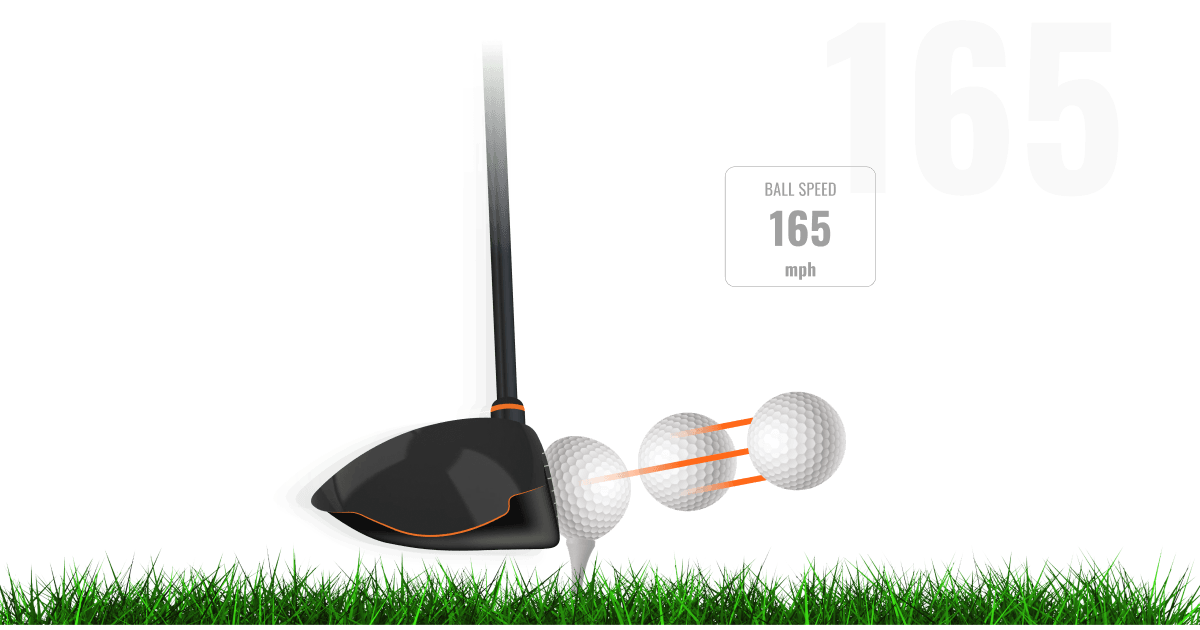What is Ball Speed?


Generated by club speed and impact, Ball Speed is the speed of the golf ball immediately following impact.
Bad impacts off the toe or heel of a club will reduce potential Ball Speed.
‘Glancing blows’ created by hooks, slices and hitting too much down on the ball can also reduce the potential Ball Speed.
Although a golfer’s club speed is key to potential distance, the Ball Speed that is created at impact is the biggest factor in how far the ball carries.
Gaining 1 mph of Ball Speed can increase your driver distance by up to 2 yards.
The highest Ball Speed ever recorded was 241.6 mph by Kyle Berkshire in October 2023. The four-time World Long Drive Champion’s record-setting effort came off a 579-yard tee shot.
Check out Berkshire’s astounding Trackman-measured drive here.
Technical Definition:
Ball Speed – The speed of the golf ball’s center of gravity immediately after separation from the club face.
Tour Averages
PGA Tour
Driver – 171 mph
LPGA Tour
Driver – 143 mph
For a full list of Tour averages, visit Trackman PGA and LPGA Tour Averages.
Trackman Combine Averages
Male Amateur (Driver)
Scratch of Better – 161 mph
5 HCP – 147 mph
10 HCP – 138 mph
Average Golfer (14.5) – 133 mph
Bogey Golfer – 131 mph
Female Amateur (Driver)
Scratch or Better – 131 mph
5 HCP – 125 mph
10 HCP – 119 mph
15 HCP – 111 mph
The standard assumption for Ball Speed comes from the Trackman Optimizer. For the driver, a club speed of 94 mph, attack angle of 0 degrees, and optimized carry results in a Ball Speed of 137 mph. For a 6-iron, a club speed of 80 mph and mid-trajectory results in a 110 mph. For a PW, a club speed of 72 mph and mid-trajectory results in a Ball Speed of 86 mph.
What our Trackman Masters say about Ball Speed…
“One of my players periodically loses 18-20 yards of distance with his driver. This occurs when his ball position moves too close towards center. Some months earlier, whilst we were working on developing an upward attack angle, we discovered that through moving his ball position in line with his left toe his Ball Speed dramatically increased from 152 mph to 166 mph. Since then, whenever his Ball Speed declines, we always look at ball position first.”

Chris Brook
PGA International Golf Coach, UK
“When addressing the collision sequence with the student, I will see an increased Ball Speed due to a more centered strike. It is common to see a face to path separation and a decreased Ball Speed number. As soon as we match face angle to club path, we achieve more compression on the ball, leading to an increase in Ball Speed.”

Richard Woodhouse
KDV Sports, Australia
“Ball Speed is one of the most important factors for distance. If the correlation of club speed and Ball Speed do not match my expectations, then I will have a look at spin rate, spin axis, and other factors around impact. Often off-center hits are involved, so I keep a close eye on where the contact is being made on the club face.”

Christoph Bausek
Progressive Golf, Austria